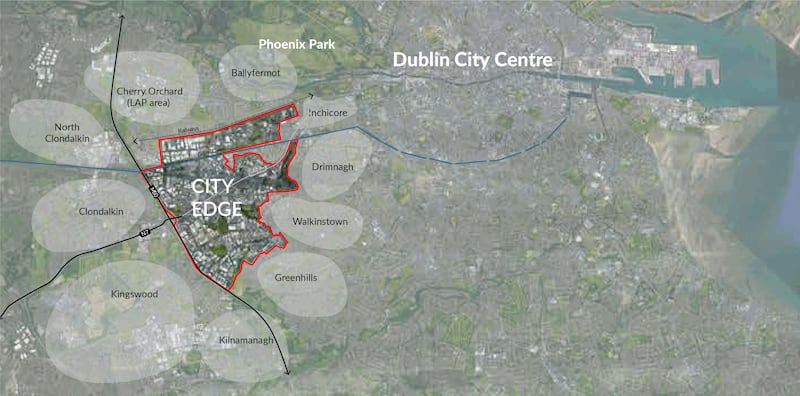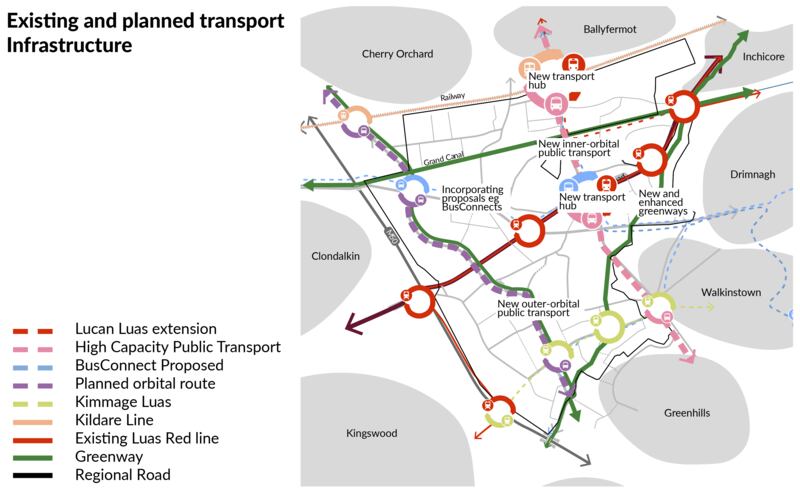A major new west Dublin town with a population greater than Galway city will be virtually car-free under plans published by Dublin City Council and South Dublin County Council.
The City Edge project, which envisages the transformation of 700 hectares of industrial land along the Naas Road with 40,000 new homes, will be built to a “zero-parking” standard and will ultimately be a car-free development, according to the local authorities’ framework plan published on Tuesday.
The projected population of 85,000 by 2070 will be expected to walk, cycle or use public transport. Apartment blocks, will not be built with underground car parks, previously a requirement of many apartment schemes. This, the authorities said, would reduce construction costs and should result in more affordable homes.

The project, which will encompass five districts of Naas Road, Kylemore, Cherry Orchard, Red Cow and Greenhills, requires significant investment in new public transport, the report acknowledges.
READ MORE
While the area is served by the Luas Red line, buses and a rail station at Park West, growing the area will require the development of the Lucan Luas line, which is included in the Greater Dublin Area Transport Strategy, as well as a new rail station at Kylemore, a new Luas stop on Naas Road, and potentially a new Luas line to Kimmage.
First phase by 2030
The early delivery of a comprehensive and coherent cycle network, providing appropriate levels of segregation, is also “crucial to the sustainable development of City Edge,” it said.

The first 3,500 homes are expected to be completed by 2030 and, as an interim measure pending the opening of new public transport links, multistorey car parks or “collective parking units” will be built which will later be converted to other uses.
These parking spaces would be available for short-term lease and would be remote from neighbourhood centres to enable the provision of car-free streets in areas of high pedestrian activity, and remote from transport hubs to discourage “unplanned park-and-rides”.
Currently, 25,000 people are employed in the area, but this is projected to increase to 75,000. The authorities plan that “zero workplace parking be provided for new employment centres, with the exception for persons with identified mobility needs”.
A small amount of parking will be retained throughout the area to facilitate people with disabilities, but the plan envisages a “long-term transition to an overall car-free development as both the public transport offering and supporting services mature”.











